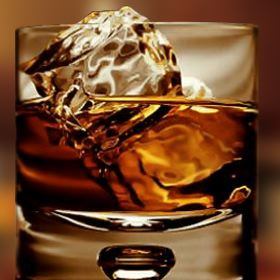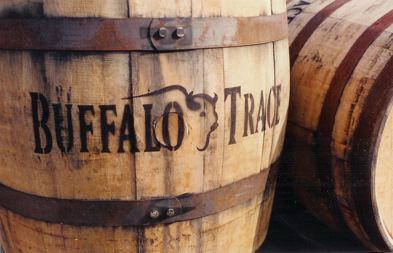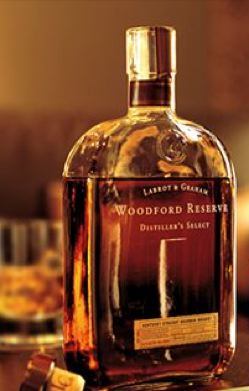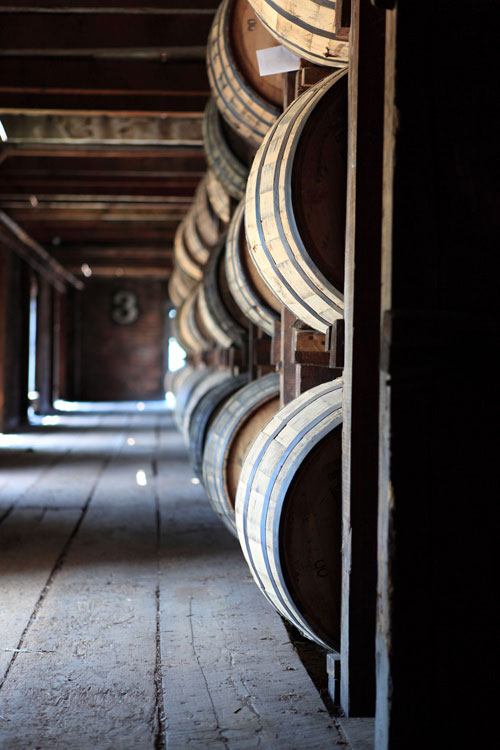 If you thought you knew the Kentucky Bourbon Trail, think again. Kentucky’s higher-proof version of the Napa Wine Trail has spirited activities both in and out of the tasting rooms.
Patti Nickell explores the experiences that reflect a truly American sense of place and history.
If you thought you knew the Kentucky Bourbon Trail, think again. Kentucky’s higher-proof version of the Napa Wine Trail has spirited activities both in and out of the tasting rooms.
Patti Nickell explores the experiences that reflect a truly American sense of place and history.
When you think about channeling your inner Jack Kerouac and taking to the American road for a truly great driving experience, what do you think about? California’s Highway 1, Route 66, or perhaps the wickedly twisting Hana Highway in Maui?
With all due respect to those scenic drives, they don’t offer quite the side benefit of Kentucky’s famed Bourbon Trail.
Unlike its spirit(ual) cousin, the Napa Wine Trail, which follows a more or less straight line, the Bourbon Trail forms a geometric pattern—from Lexington to Frankfort to Bardstown and back to Lexington. Along the way, you’ll do a lot of sipping of America’s only native spirit, so declared by a 1964 Act of Congress, and take in some of the Inner and Outer Bluegrass’s most scenic landscapes.
 There are six distilleries on the official Trail, but two others—Buffalo Trace and Tom Moore—are also open to visitors. Each provides quick shots both of bourbon and of bourbon facts—like Kentucky produces 95 percent of the world’s supply of bourbon; that all bourbon must be made with a minimum of 51 percent corn and aged in charred new oak barrels; that it was a Baptist preacher, Elijah Craig, who first came up with the recipe way back in 1789; and that there are currently more than five million barrels of bourbon and other whiskeys aging in Kentucky.
There are six distilleries on the official Trail, but two others—Buffalo Trace and Tom Moore—are also open to visitors. Each provides quick shots both of bourbon and of bourbon facts—like Kentucky produces 95 percent of the world’s supply of bourbon; that all bourbon must be made with a minimum of 51 percent corn and aged in charred new oak barrels; that it was a Baptist preacher, Elijah Craig, who first came up with the recipe way back in 1789; and that there are currently more than five million barrels of bourbon and other whiskeys aging in Kentucky.
But just like going beyond the quick shot to savor a glass of 23-year-old Pappy Van Winkel, the longer you spend at the distilleries, the more you learn of this industry. You may even glean such tidbits as Jim Beam of the distillery bearing his name, was known to take the strain of yeast home with him each weekend to prevent industrial espionage; that Buffalo Trace was the only distillery in the state to continue making whiskey during Prohibition—for “medicinal purposes only, of course” and that Lord Snowden, former husband of Britain’s Princess Margaret came close to drowning in a fermenting tank while on a visit to Maker’s Mark.
If you aren’t intrigued by now, go pop a tab on a Bud Lite; but if you are, here’s more of what awaits you on the Kentucky Bourbon Trail (and take note: you can find bourbon-related activities both on and off the Trail.)
Find out why we recommended the Bourbon Trail as a somewhat more unusual option in this article: Spring Break 2010: Alternatives & Family-Friendly Vacations.
 Starting from Lexington, the Trail leads first to Woodford Reserve. Kentuckians will tell you that Woodford, situated in the midst of thoroughbred country, is the only distillery where you can see the state’s two most famous products aging side by side. A National Historic Landmark, Woodford is the oldest distillery on the Trail, dating back to the late 1700s. The tour introduces visitors to the only triple distillation process used to handcraft bourbon today, as well as the only copper pot still and the only surviving stone-aging warehouses in America.
Starting from Lexington, the Trail leads first to Woodford Reserve. Kentuckians will tell you that Woodford, situated in the midst of thoroughbred country, is the only distillery where you can see the state’s two most famous products aging side by side. A National Historic Landmark, Woodford is the oldest distillery on the Trail, dating back to the late 1700s. The tour introduces visitors to the only triple distillation process used to handcraft bourbon today, as well as the only copper pot still and the only surviving stone-aging warehouses in America.
They may be surprised to discover that the old Government House, now used for special events, has no running water or bathroom; distillery personnel say it is a holdover from the days of the “revenuers,” who were discouraged from getting too comfortable when they made their periodic checks.
Note: If your base is Lexington, and you are inclined to stay in a bourbon state of mind, make a beeline to the Bluegrass Tavern where the barkeep pours 178 different kinds of bourbon, or the Horse & Barrel, Whiskey Magazine’s pick as one of the three best whiskey bars in the world. You can go cheap (Ancient Age at $4.25 a shot) or steep (Pappy Van Winkle’s 23-year-old reserve at $32 a glass.)
From Lexington, it’s an easy drive to Lawrenceburg and a double dose of distillery touring. Austin Nichols Distillery, sits atop a hill overlooking the Kentucky River, with its most unique feature, a 40-foot tall column still.
You might know Austin Nichols better by the official name of its bourbon, Wild Turkey, a brand name that happened inadvertently. In 1940, a distillery executive gathered with friends for their annual wild turkey hunt in South Carolina. Being asked to supply the whiskey, he pulled a sample from the warehouse that proved so popular that the following year the group insisted he bring some more of “that wild turkey bourbon.” The exec knew a winning product when he saw one and soon after began marketing Wild Turkey Bourbon.
Not far from Austin Nichols is Four Roses Distillery, whose Spanish mission-style architecture seems more in character for California than the Bluegrass, but the bourbon it produces—10 distinct recipes—is pure Kentucky. This is another distillery with an interesting, and romantic, story behind its name. It came about when the founder, enamored of a beautiful Southern belle, proposed marriage. She replied that if her answer was yes, she would wear a red rose corsage at a ball the following evening. Upon entering the ballroom and seeing the object of his affections wearing a corsage of four perfect red roses, the young man knew he had not only a future bride, but a name for his bourbon.
 Next it’s on to Frankfort, Kentucky’s capital, and Buffalo Trace, the oldest continuously operating distillery in the United States (since 1887—remember, it continued making “medicinal” bourbon during Prohibition), and the first to market single-barrel bourbon commercially.
Next it’s on to Frankfort, Kentucky’s capital, and Buffalo Trace, the oldest continuously operating distillery in the United States (since 1887—remember, it continued making “medicinal” bourbon during Prohibition), and the first to market single-barrel bourbon commercially.
Then head over to Serafini Italian restaurant on West Broadway which features a collection of more than 75 bourbons. On the same street is Capital Cellars, considered one of the largest bourbon sellers in the area.
Then head southwest to Clermont to the Jim Beam Distillery. Set amidst a gorgeous backdrop of rolling hills, Jim Beam is the largest bourbon distiller in the world, specializing in the production of hand-crafted small batch bourbons, and producing what is consistently rated as one of the two top-selling whiskeys in the U.S. (Hank Williams Senior and Junior and George Wendt, of Cheers fame—all gents who appreciated a good libation—are known fans.)
Traveling south to Loretto, the distinctive red-and-black buildings on Hardin’s Creek signal your arrival at Maker’s Mark, the oldest working distillery on its original site (since 1805.) Here, where eight generations of the Samuels family have toiled, you’ll discover why Maker’s Mark crafts its bourbon in batches of fewer than 19 barrels; learn that it was the first distillery to be declared a National Historic Landmark, and even get to hand dip your own bottle in its signature red wax.
You may or may not learn that in 1953, Bill Samuels, Sr., in a dramatic ceremony, burned the 170-year-old family recipe, in his words, “that stuff could blow your ears off,” and developed a new recipe using locally grown corn, malted barley and winter wheat. The success of that recipe more than made up for the fact that in the process he also burned up the drapes and very nearly the whole house.
Maker’s Mark has had its share of famous visitors, but none as memorable as the previously mentioned Lord Snowden. Forget about the “angel’s share,” he nearly met the angels themselves. Being an adventurous photographer, Snowden wanted to get a shot of the almost empty fermenting tank. Climbing into the tank, he was quickly overcome by the fumes. It was only the fact that he fell backward rather than face down that saved him from drowning in the remaining liquid.
Bardstown, known as the “Bourbon Capital of the World,” is home to two distilleries: Heaven Hill and Tom Moore. The former is America’s largest independent family-owned producer of distilled spirits and the second-largest holder of aging bourbon whiskey in the U.S., with an inventory exceeding 850,000 barrels. The latter has been called one of Kentucky’s best-kept secrets, but there’s nothing secret about its super-premium 1792 bourbon that gets its name from the year that Kentucky joined the Union.
Between sips of bourbon, wander over to the Oscar Getz Museum of Whiskey History and trace the development of spirits from the Whiskey Rebellion of the Colonial Era through Prohibition up to today. One of the most popular exhibits is a whimsical mural, “What’s your pleasure, Mr. President?” showing 43 U.S. presidents holding their favorite libations (Clinton declined to name a favorite, and Bush 2 and Obama have not yet been added.)
From George Washington (port and Madeira) to George H.W. Bush (gin and tonic), our chief executives have been a cocktail-loving bunch, yet only one—Harry Truman—brought joy to the heart of Kentuckians. His choice: bourbon and branch water.
By Patti Nickell for PeterGreenberg.com. Patti Nickell is a contributing travel writer for the Lexington Herald-Leader.
Related links on PeterGreenberg.com:












